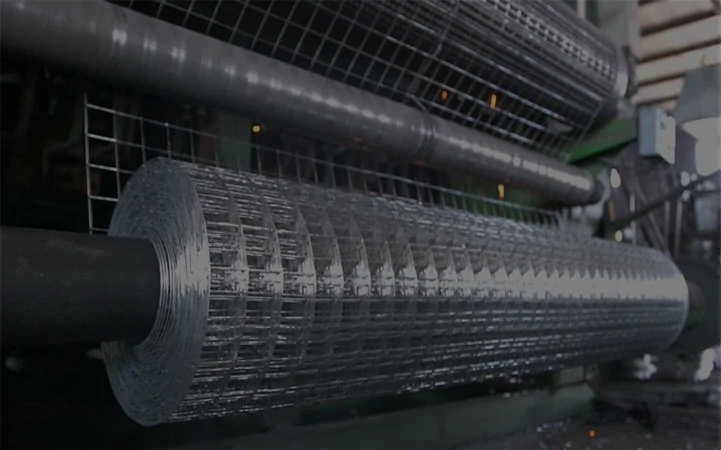Innovative Solutions for Iron Binding in Wire Manufacturing Processes
Understanding Iron Binding Wire An Essential Tool for Various Industries
Iron binding wire, often referred to as binding wire or tie wire, is a versatile product that has gained prominence across various industries because of its durability and adaptability. This article delves into the characteristics, applications, and benefits of iron binding wire, shedding light on why it is an essential tool for construction, agriculture, and beyond.
Characteristics of Iron Binding Wire
Iron binding wire typically comes in various gauges, thicknesses, and lengths, catering to diverse applications. Made primarily from high-quality mild steel or iron, it exhibits exceptional tensile strength and flexibility, making it easy to manipulate and shape without breaking. The wire is often galvanized or coated to prevent rust and corrosion, which enhances its longevity, especially when used in outdoor or harsh environments.
The standard color for most iron binding wire is a dark gray or black, though galvanized versions may appear shiny due to the zinc coating. The wire is available in coils or spools, which makes it convenient for storage and transport. The ease of handling and installation has led to its widespread adoption in many sectors.
Applications of Iron Binding Wire
1. Construction Industry One of the primary uses of iron binding wire is in the construction industry. It is commonly employed for tying rebar (reinforcing bar) together, providing structural integrity to concrete structures. The wire holds rebars firmly in place during the pouring of concrete, ensuring the building is reinforced appropriately. Additionally, it can be utilized to secure scaffolding and support structures, aiding in creating safe working environments.
2. Agricultural Sector In agriculture, iron binding wire plays a significant role in securing plants, fruits, and vegetables. Farmers often use the wire to support climbing plants, ensuring they grow properly and are less susceptible to damage from the elements. Furthermore, it can be used to create fencing or trellises, providing protection for crops against wildlife.
iron binding wire

3. Manufacturing and Packaging The manufacturing industry also benefits from iron binding wire, as it is used in the packaging of various goods. Items can be bundled together securely for transport, preventing damage during handling and shipping. This is particularly useful for products like textiles, pipes, and other manufactured goods that require stability during movement.
4. Crafts and DIY Projects Beyond industrial applications, iron binding wire is a favorite among DIY enthusiasts and crafters. Its malleability makes it an excellent choice for creating decorative items, sculptures, and even jewelry. Crafters appreciate the ability to shape the wire into intricate designs, making it an essential component in various artistic endeavors.
Benefits of Using Iron Binding Wire
The advantages of using iron binding wire are manifold. First and foremost, its strength and resilience ensure that it can withstand considerable strain and pressure, making it reliable for critical applications. This durability translates to safety in construction projects, preventing potential failures.
Moreover, the cost-effectiveness of iron binding wire makes it attractive to businesses across sectors. Compared to other binding materials, iron wire is often less expensive while still offering excellent performance. This cost-efficiency allows businesses to manage their budgets without compromising on quality or safety.
Another benefit is the ease of use. Iron binding wire can be easily cut, twisted, and shaped, requiring minimal tools for effective application. This practicality not only speeds up the processes involved in construction and manufacturing but also empowers workers with the ability to execute tasks with precision.
Conclusion
In conclusion, iron binding wire is a fundamental component within various industries, from construction to agriculture and beyond. Its characteristics of strength, flexibility, and cost-effectiveness make it an indispensable tool for professionals and hobbyists alike. As industries continue to evolve and innovate, the demand for versatile materials like iron binding wire will likely remain robust. Its ability to adapt to different applications while ensuring durability and reliability reinforces its status as a cornerstone of modern manufacturing and construction practices. Whether you are a builder, farmer, or crafter, investing in quality iron binding wire can significantly enhance your project outcomes.
-
Space-Saving Chain Fence Hacks Vertical Gardening with Cyclone MeshNewsJul.16,2025
-
Innovations in Iron Nail Wire Production for Modern ConstructionNewsJul.16,2025
-
Creative Uses of Wire Netting Fence in Modern Landscape DesignNewsJul.16,2025
-
Barbed Wire Fence Innovations in Anti-Climb TechnologyNewsJul.16,2025
-
Architectural Uses of Umbrella Nails for Aesthetic Roof DesignsNewsJul.16,2025
-
Architectural Uses of Razor Barbed Wire in Secure Urban DesignNewsJul.16,2025




